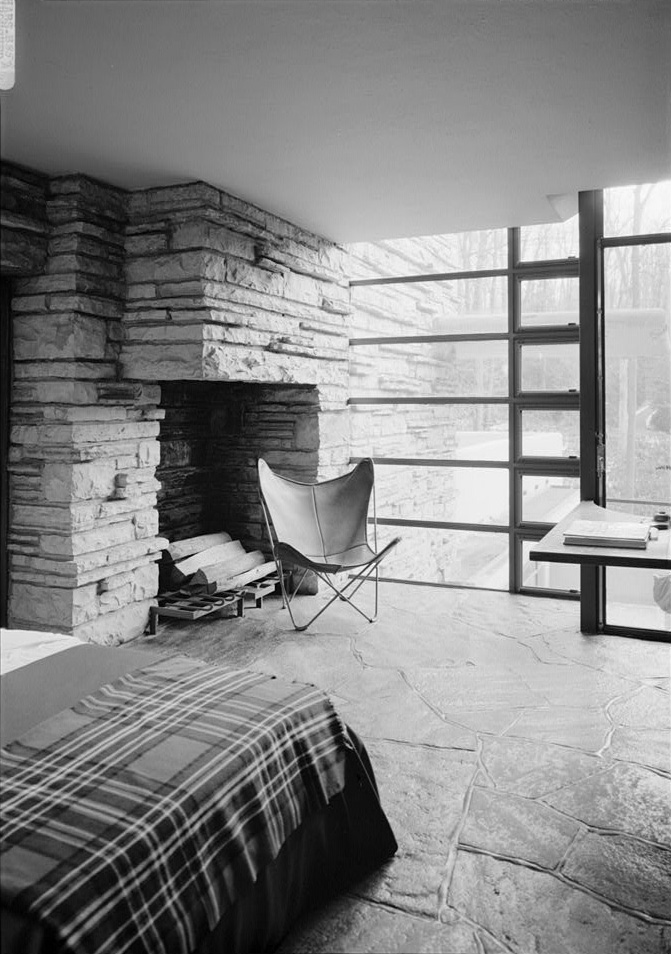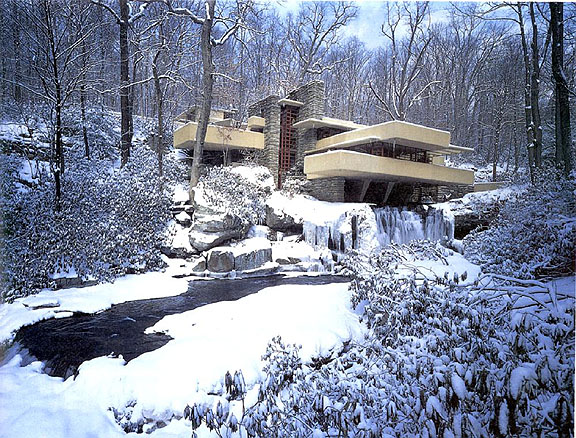organic architecture. at its best.
Coined by Frank Lloyd Wright, organic architecture is an idea first brought up in his writings. The organic aspect of Fallingwater was intact before any construction even began. When Wright first showed his plans to his client, the Kaufmans, they were surprised that the house was located directly over the falls, rather than having a view of them. Wright responded by saying that he wanted them to actually interact with them rather than viewing the falls from a distance. This is exactly what organic architecture strives to do- integrate smoothly with its environment and complement it, rather than standing out as an independent object. I feel that this concept is best exemplified in Wright's 1936 Fallingwater (and its only fitting what with the trip and all...).
 |
| Year round, Fallingwater always delivers big. |
The exterior of Fallingwater is marked by the large, overhanging concrete terraces, reminiscent of the massive boulders pushing into the falls. Interestingly enough, these same boulders push into the house at various locations. One rock surface, for example, finds its way into the living room, making up the bottom of the fireplace and also a potential seat in another spot.
 |
| stone floor. with rocks. |
Wright actually integrated Japanese style architecture when he designed this space. One of the most dominant features of this are the low-hanging ceilings. For the most part, the Fallingwater ceiling is around 6'6" to 7'. That is unusually low for any space. However, this does succeed in pulling the focus away from the interior and out the windows, reinforcing the house's connection to its surrounding natural environment.
 |
| dressing room, west tower, second floor...low ceilings. |





great photos. sources? nice writing, anuj.
ReplyDelete